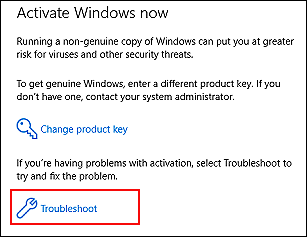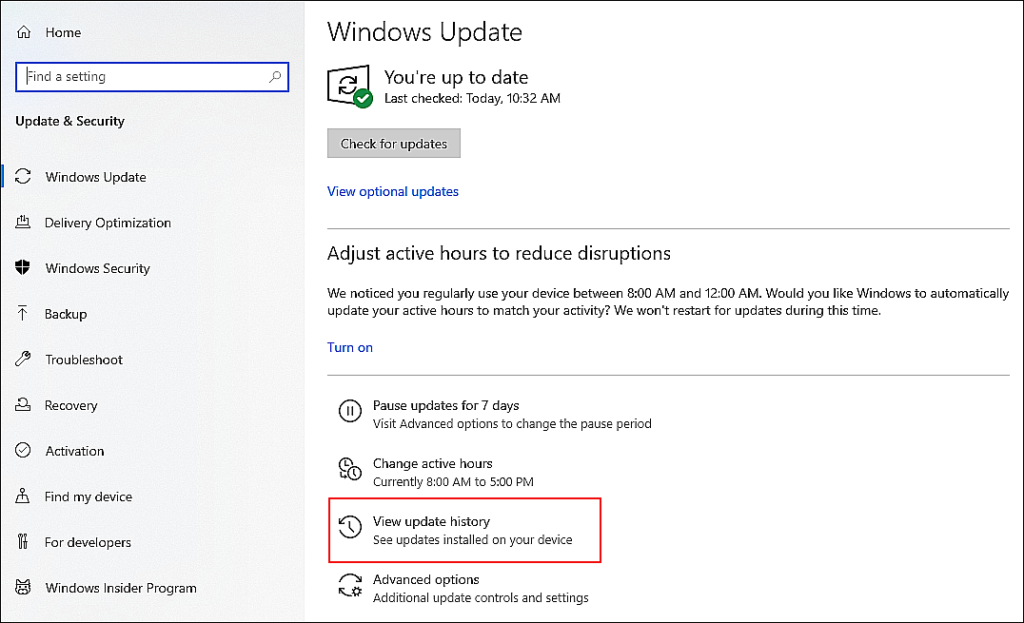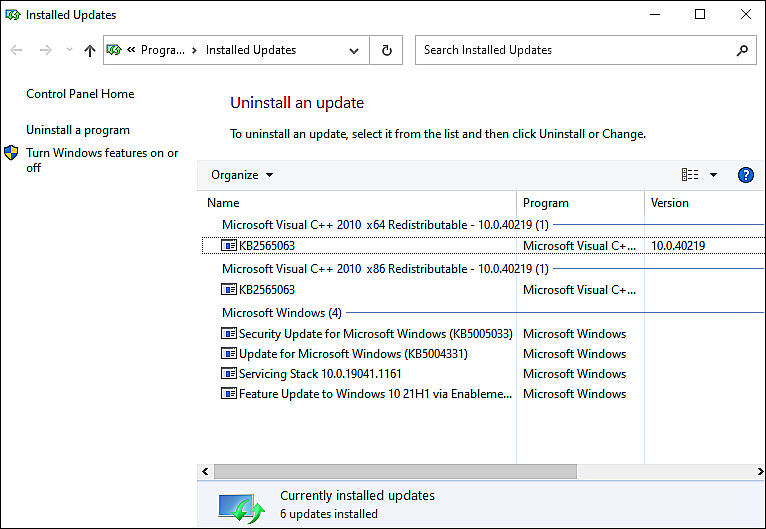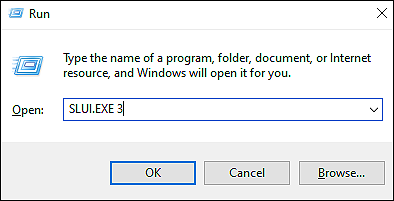Looking for easy ways to fix Activation error 0xc004f200 on Windows?
Windows activation aims to link a licensed copy of Windows with a specific computer system, but the process might not be as simple for some users.
Recently, several users reported that their screens display Activation error 0xc004f200 upon attempts to activate Windows, labeling the operating system as non-genuine. What’s strange is that it pops up even when users are using a valid activation key.
We had a look into the issue and discovered that it can be caused by a number of reasons, including bad updates, system file corruption, and licensing key inconsistency. If you are facing a similar issue, you are in the right place.
In this guide, we will walk you through the relevant troubleshooting steps in detail, so keep reading.
Let’s get started!
1. Run the Activation Troubleshooter.
There is a high chance that the Activation error 0xc004f200 on Windows is caused by a licensing inconsistency, which is why before you move towards the slightly complex troubleshooting steps, we recommend running the Activation Troubleshooter.
The Activation Troubleshooter will identify the issues resulting in the error and will attempt to repair them automatically.
Here is how you can run the Activation Troubleshooter on your PC:
- Open a Run dialogue box by pressing Windows + R keys simultaneously on your keyboard.
- Inside the text field of the dialogue box, type ‘ms-settings:activation‘ and hit Enter.
- Select Activation from the left pane and in the right window, locate and click on the Troubleshoot button.

- Now, wait for the scan to complete. If the troubleshooter detects any issues, it will suggest fixes. In that case, click on Apply this fix to proceed.
- Finally, reboot your PC and check if the issue is resolved.
If a licensing inconsistency was causing the issue, running the troubleshooter should resolve the 0xc004f200 error code.
2. Uninstall the Problematic Update.
In the event that the error code 0xc004f200 appears after you installed an update on your PC, then the update could be the cause of the problem.
If this scenario is applicable, then we encourage you to go ahead and uninstall the problematic update.
Listed below are the steps to uninstall the problematic update on Windows 7, Windows 8/8.1, and Windows 10.
Uninstall Update on Windows 7
If you are facing this issue on Windows 7, follow the steps mentioned below to uninstall the problematic update:
- Press Windows + R keys simultaneously to open a Run dialogue box,
- Inside the text field of the dialogue box, type ‘control‘ and hit Enter. This will launch Control Panel on your PC.
- Inside the Control Panel window, click on Windows Update and then select View update history from the left panel.

- Now click on the most recently installed update that you think might be causing the issue and select Uninstall.
- Wait for the process to complete and then restart your PC.
Hopefully, uninstalling the problematic update will resolve the issue on your PC.
Uninstall Update on Windows 8/8.1
Here is how you can uninstall update on Windows 8/8.1:
- To bring up the Apps screen from the Start screen, either swipe up or click on the arrow icon on the bottom right of your window.
- Within the Apps section, scroll to the right all the way till you reach the Windows System section.
- Locate Control Panel and click on it.
- Inside the Control Panel window, go to Programs and click on Programs and Features.
- Click on the View Installed Updates and right-click on the update that you want to uninstall.
- Click on Uninstall and wait for the process to complete.
- Once the update is successfully uninstalled, restart your PC.
If the problematic update was causing the issue at hand, uninstalling it will fix the error code 0xc004f200.
Uninstall Update on Windows 10
Here is how you can uninstall the problematic update under discussion on Windows 10:
- Press Windows + R keys simultaneously to open a Run dialogue box.
- Inside the text field of the dialogue box, type ‘ms-settings:windowsupdate‘ and hit Enter.
- Doing so will launch the Windows Update screen of the Settings app on your PC.
- In the right pane, click on View update history, and in the next window, click on Uninstall updates.

- Now locate and right-click on the update that you want to uninstall.

- Select Uninstall and wait for the process to complete.
- Once the update is successfully uninstalled, restart your PC.
This should resolve the error code 0xc004f200 on Windows 10.
3. Refresh Windows Update Components.
If none of the methods above work for you, we suggest that you simply reset the Windows Update components on your computer.
As we mentioned earlier, Windows Update components can get corrupt and fail to perform required operations. You can only fix the bad components by resetting them if the troubleshooting utilities cannot resolve the problem.
Here is how you can do that:
- Type cmd in the search bar and click on Run as administrator to launch Command Prompt with administrative rights.
- Now type the commands mentioned below and hit Enter after each to execute them. These commands will stop all the Windows Update Services.
net stop wuauserv
net stop cryptSvc
net stop bits
net stop msiserver
- Once done, execute the commands mentioned below one by one.
net start wuauserv
net start cryptSvc
net start bits
net start msiserver
- Finally, restart your PC and check if resetting the update components resolved the error.
If corrupt Windows Update components were causing the issue, resetting them will resolve it in no time.
4. Try Using CleanMyPC.
As we described earlier, corruption errors or bugs can also cause an Activation error on your PC. If you haven’t deep cleaned your PC recently, you might want to do so right now, since it may help you solve the error code 0xc004f200.
The best way to do this is via a PC cleaner. Cleaning programs use tools to scan your computer and programs, including the Windows registry. They identify problems, as well as fix them without user intervention. Having said that, you must ensure that the cleaner you choose is capable of such advanced functions.
We recommend CleanMyPC if you are struggling to find an efficient cleaner.

CleanMyPC, unlike most PC cleaners, features a powerful system-maintenance suite capable of resolving even the most difficult problems, including privacy concerns and slow performance.
If this looks like something your PC desperately needs, install CleanMyPC now!
5. Change the Windows Product Key.
There is a chance that your screen is displaying the error code 0xc004f200 if you reinstalled Windows using media other than the valid Recovery disks for your computer.
If this scenario is applicable, you can fix the issue under consideration by changing the Windows Product Key.
Here is how you can do that:
- Locate the COA sticker on your computer case and note down the license key.
- Now press Windows + R keys simultaneously to open a Run dialogue box.
- In the text field of the dialogue box, type ‘SLUI.EXE 3‘ and hit Enter.

- In the next window, enter the license key and wait for the process to complete.
That’s it.
This should resolve the issue.
6. Reinstall Windows.
If none of the methods mentioned above works for you, it implies that the error causing the issue cannot be resolved using the conventional troubleshooting steps.
In this case, we encourage you to go ahead and reinstall Windows.
If you reinstall Windows, it will return to its original state, as if you were installing it for the very first time. However, you will not lose any of your important data. Hopefully, reinstalling the Windows will resolve the issue once and for all.
This brings us to the end of our guide on fixing the Activation error 0xc004f200 on Windows. We hope that one of the methods mentioned above did the trick for you. If you have any questions regarding the troubleshooting steps, feel free to let us know in the comment section below.
If this guide helped you, please share it. 🙂





